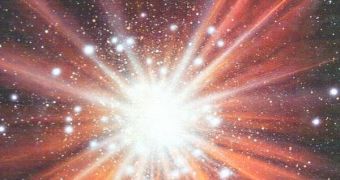Astrophysicists believe that the new experiments that will be facilitated by the Large Hadron Collider once it's repaired will finally offer them a glimpse at and, why not, a confirmation of the fact that supersymmetry exists. This concept refers to the fact that subatomic particles, as described in the Standard Model, must have a super-partner, which would explain why they work the way they do, and why they exhibit such large forces.
For instance, the weak nuclear forces are 1032 times more powerful than gravity, which simply cannot be true in theory. The Standard Model predicts all the subatomic particles, as well as the interactions between them. The problem is that it has a lot of discrepancies and things that do not match, but which are all solved by supersymmetry.
Basically, the theory goes that after the Big Bang the Universe was completely symmetrical, as far as particles and the energies inside it were concerned. Once things began to catch shape and the first stars and, subsequently, black holes appeared, this symmetry was lost, and the super-counterparts of the discovered particles were no longer visible.
They can, however, be noticed if the same conditions at the beginning of the Universe are recreated. And that is precisely what experiments in the LHC are trying to achieve. That is to say, by colliding two jets of particles, accelerated clockwise and counter-clockwise, respectively, the international science team behind CERN's project hopes to recreate a small Big Bang, which will hopefully shed light on what supersymmetry might have looked like, or on whether it even existed. Also, the particle that makes energy acquire mass could also be found, which would be an enormous breakthrough in the field of physics.
Explanations of what might have happened at the beginning of things are very complicated. For instance, one holds that the vacuum of space, containing the original supersymmetry, was over time replaced by other types of vacuums, where this symmetry was not present. But the new vacuums appeared in various areas at once, and started expanding and merging with each other really fast. In the process, the collision triggered what scientists now call gravitational waves (g-waves), which are basically ripples in the space-time continuum.
Experts hypothesize that the g-waves may operate at any frequency between 0.01 and 10,000 hertz, which means that they could theoretically be detected by the Laser Interferometer Gravitational-Wave Observatory (LIGO) instrument, built especially for this task. It would be “exciting, if it is realized. If there is a detectable signal, features of the signal provide unique information about these dramatic cosmic events, in part because gravitational waves can pass freely through space over cosmic history,” University of California in Santa Cruz (UCSC) researcher Michael Dine opines.

 14 DAY TRIAL //
14 DAY TRIAL //